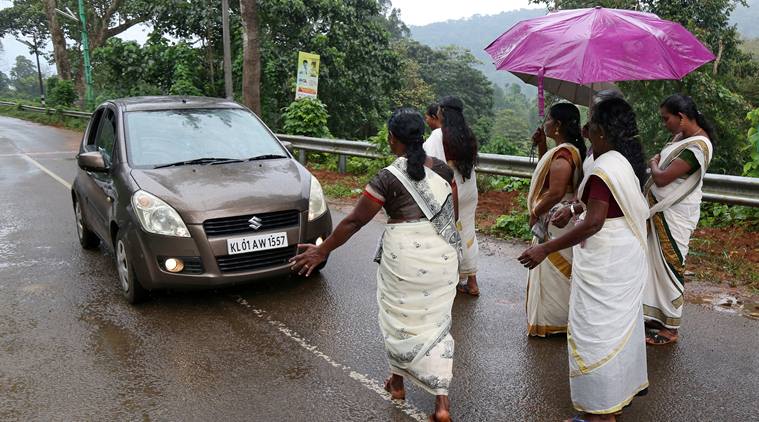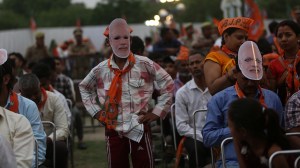- India
- International
Travancore parallel: the fight to wear an upper garment
The Channar revolt exposed the caste fault-line that ran deep in the kingdom of Travancore. The Nadars embraced Christianity promoted by British missionaries as a way out of the oppressive caste order enforced by upper caste Hindus, which included the royalty.
 Devotees stop a car to check if any women of menstruating age are headed towards the Sabarimala temple, at Nilakkal Base camp in Pathanamthitta district in Kerala. (REUTERS/File)
Devotees stop a car to check if any women of menstruating age are headed towards the Sabarimala temple, at Nilakkal Base camp in Pathanamthitta district in Kerala. (REUTERS/File)
While restating the Kerala government’s resolve to uphold the Supreme Court’s order lifting the legal ban on women aged between 10 and 50 entering the Sabarimala temple, Chief Minister Pinarayi Vijayan recalled an iconic civil rights protest in the erstwhile princely state of Travancore in the early 19th century to buttress the argument that orthodox sections have always resisted social reforms. “When women fought for their right to cover breasts, they had faced opposition,” Vijayan said.
The struggle he was recalling is referred to as Marumarakkal Samaram (Protest to cover the upper body) or Channar Lahala (Channar Revolt). It began in the early 19th century, when women from the Channar caste (now identified as Nadar, an OBC community) who had converted to Christianity sought to cover the breasts, a right only Hindu upper caste women were allowed to exercise. The diwan of Travancore state, Colonel Munro, issued an order favouring the demand.
READ | Road to Sabarimala: What is the pilgrimage for, how did the restriction on women come about?
The upper castes (Nairs), who dominated the bureaucracy as well, refused to allow the order to be followed and attacked (Nadar Christian) women who sought to wear an upper garment. In the face of resistance from the upper castes, the order was even amended to say that Nadar Christian women could wear a jacket (blouse) that was different from the dress worn by Nair women.
In 1822, nearly a decade after Colonel Munro’s order, riots broke out in Kalkulam, a town in southern Travancore (now part of Kanyakumari district in Tamil Nadu), with Nair men attacking Nadar Christian women who wore a cloth covering the upper body. British Christian missionaries approached courts and got a favourable order, which said Nadar Christian converts could avail of all the rights available to Christians in the state. However, in many marketplaces in southern Travancore, upper caste men continued to attack Nadar Christian women who chose to assert their right to wear what the order entitled them to. By the late 1820s, the riots subsided with a royal decree that allowed the lower castes to wear the upper cloth but in a manner different from the upper castes.

Two decades later, the issue flared up again when Nadar women began to wear both the blouse and the upper cloth preferred by upper caste women. The scale of violence was bigger this time as Nairs and Nadars clashed in many market-towns in southern Travancore and churches and schools were set on fire. After months of riots, the Palace, under duress from the British Governor of Madras Presidency, issued a decree, allowing Nadar Christians the right to wear garments of their choice.
The Channar revolt exposed the caste fault-line that ran deep in the kingdom of Travancore. The Nadars embraced Christianity promoted by British missionaries as a way out of the oppressive caste order enforced by upper caste Hindus, which included the royalty. While caste Hindus didn’t object to the conversion, they resisted the attempt of lower castes to claim social parity with them by moving out of Hinduism. At the core of the Channar revolt was caste Hindus’ resistance to the idea of equality. Dress had become a metaphor for equal rights — a subversive idea that rejected the graded inequality embedded in the social hierarchy founded on caste. This was no matter of faith or gender rights, as in the Sabarimala issue, but a case of anti-caste assertion.
EXPRESS OPINION
Apr 25: Latest News
- 01
- 02
- 03
- 04
- 05









































